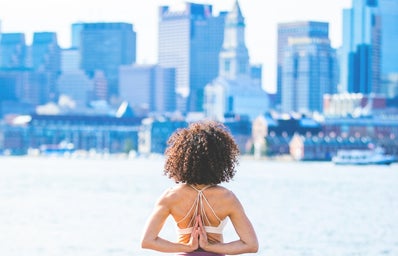It’s the medicine you can’t find at Walgreens over the counter or get a referral for from your doctor’s office. Meditation is the alternative eastern medicine that is becoming the new normal among Americans.
According to a survey done in 2017 by the National Center for Complementary and Integrative Health, the use of meditation as a form of health care by U.S. adults has increased from 4.1 percent in 2012 to 14.2 percent in 2017.
It’s not a pill that you take orally, but the health benefits of meditation are quickly apparent. Jung-Hwa Lee, the owner of Body & Brain Training Center in Smithtown, says a person can usually feel the change right away whether or not they’ve practiced meditation before.
As a practitioner of eastern medicine for 16 years, Lee says the reason why health improves is because meditation opens energy channels in our bodies which allows energy circulation to improve. This energy leads to blood circulations and organ functions to rise.
“Someone who has arthritis can benefit by having better joint circulation,” she said.
Laurie Dimino, a meditation practitioner says she only started practicing about three years ago but has since felt an increase in her emotional health.
“It makes you feel happier and more upbeat,” she said.
She stated that she uses it as a way to shut everything off and tries to do it either before bed at night or in the morning for at least 15 minutes every day.
“It helps me focus on the here and now and not worry about tomorrow,” Dimino said.
Lee says that consistency is key to reap in the health and emotional benefits.
“Everyone’s schedule is different,” she said, “so even if they can only do it once a week, as long as they are consistent, their bodies can also start to change.”
A Harvard study from May 2018 found that meditation affects your genes and can lower blood pressure. Along with blood pressure, genes that regulate inflammation, glucose metabolism, and circadian rhythms also showed a change in expression. The study was small and involved 24 people who were trained to meditate over an eight-week period and did not compare the results to non-meditators.
Patricia Rodriguez, a Ronkonkoma resident stated the closest she has ever been to meditating is when she practiced yoga in high school over a decade ago.
“I’m not sure if that [yoga] counts as meditation though, but maybe if your body is relaxed enough, then I believe it can make you feel better physically,” she said.
Lee uses physical exercise called the dynamic approach with her students to first tap into energy channels in the body.
“Yoga and Tai Chi are forms of physical meditation,” she says.
Stretching, tapping, and shaking are ways your body physically prepares for the silent meditation that follows.
“Once your body’s energies are open, then you can experience the benefits of the meditation much more quickly,” she said.



